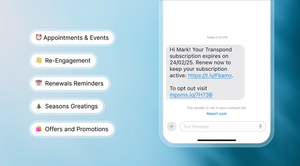Market research provides the deeper insights needed to make informed decisions, from identifying target customers to spotting new growth opportunities. Without proper research, your business could make decisions based on assumptions, leading to costly mistakes. This is where a structured approach to market research can make a difference.
Conducting market research might seem overwhelming, but it doesn’t need to be. With the right process and tools, even small businesses can gather valuable data that shape their strategies. A market research report template serves as a helpful guide to organizing and analyzing your findings, allowing you to make data-led choices that line up with your business goals.
In this article, we break down the steps involved in conducting market research, explain why it’s important for small businesses, and provide a detailed market research template you can use to simplify the research process and present your insights in a clear, actionable format.
What is market research and why is it important?
Market research is the process of gathering, analyzing and interpreting information about a target market, its consumers and the competitors within the industry. Whether you’re launching a new product, exploring a new market or refining your marketing strategies, understanding the market landscape through comprehensive market research analysis is key to making strategic choices that lead to growth and success.
It transforms data into actionable insights, aligns products with customer needs, and reduces bias in decision-making.
Why do market research? It helps businesses uncover valuable insights about customer behavior, market trends and competitive positioning. It also reduces risks, ensuring that you’re entering or operating in a market with full awareness of its potential and challenges. Without proper research, your business risks missing out on opportunities, misunderstanding your customers, or underestimating your competition.
By conducting effective market research, you can confidently create strategies that are grounded in real-world data.

Types of market research
There are two main types of market research: primary research and secondary research, both of which offer beneficial insights.
Primary research
Primary research involves collecting original, firsthand data directly from your target audience. This can include surveys, interviews, focus groups or observational studies. Primary research allows you to gather specific information tailored to your unique needs, such as customer preferences or opinions on a new product. For example, a small business might conduct customer surveys to understand their satisfaction with a recent product launch or host focus groups to gauge reactions to a new service offering.
Secondary research
Secondary research, on the other hand, relies on existing data that has already been collected and published by other sources. This can include industry reports, government statistics, academic studies, or competitor analysis.
It is often faster and more cost-effective than primary research, making it a great starting point for small businesses that need to gather broad insights about their market. For example, a business might use government data to understand demographic trends in a particular region before launching a product targeted at a specific age group.
Benefits of market research for small businesses
Market research provides numerous advantages for your small business, helping you compete effectively and grow sustainably.
Understanding customer needs
By conducting market research, you’ll gain a clearer understanding of what your customers truly want. This knowledge allows you to create products or services that resonate with your target audience, leading to higher customer satisfaction and loyalty.
Identifying new market opportunities
Market research can reveal untapped opportunities within your industry. Whether it’s a new customer segment or an emerging trend, research helps you spot growth potential that may otherwise be overlooked.
Reducing risks in decision-making
Making business decisions without research can be risky. Market research minimizes this risk by providing data-powered insights that help guide decisions on product development, marketing strategies and business expansion.
Enhancing competitive advantage
Knowing your competitive landscape is essential for staying ahead in the market. Through competitor analysis, you can identify your rivals’ strengths and weaknesses and develop strategies to outperform them.
How to conduct market research for your small business
Conducting market research is the key to understanding your audience, competitors and overall market landscape. For small businesses, this process doesn’t have to be complex or costly. By following a clear, step-by-step approach, you can gather the insights needed to make informed decisions.
Step 1: Define your research objectives
The first step in any successful market research process is defining your objectives. What do you want to learn from your research? Are you looking to understand customer preferences, gauge market size or analyze competitors’ strategies?
Defining clear, focused objectives helps ensure that your research stays on track. For example, if your objective is to explore customer satisfaction with a new product, your research efforts will center on understanding their experiences and expectations.
Step 2: Identify your target audience
Once you’ve set your objectives, it’s time to identify the audience you want to focus on. Knowing who your target audience is will enable you to collect data that accurately reflects the group most likely to engage with your product or service.
Segment your market by demographics such as age, gender, location or behavior, and take into account factors like buying patterns and preferences. For example, if you’re targeting millennials in a specific city, you’ll need to design research methods tailored to this group’s characteristics and behaviors.

Step 3: Choose your research methods
After defining your audience, the next step is selecting the correct research method to collect data. The method you choose will depend on your research objectives and budget. Common methods include surveys, interviews and focus groups.
Surveys are a popular for gathering quantitative data, while interviews and focus groups are ideal for in-depth qualitative insights. For example, if you want to gather a broad understanding of customer satisfaction, a survey may be the best approach. On the other hand, if you’re looking to explore customer attitudes in more detail, focus groups might be more effective.
It might also be worth exploring some qualitative data analysis. In comparison with quantitive data analysis, it answers questions about what actions customers take and what motivates them to take those actions.
Collecting and working with this kind of data can be time-consuming though, because it requires reflection on the part of the analyst. Which can be biased as it comes down to opinion in some cases.
Step 4: Collect and analyze your data
With your research methods in place, start the data collection process. Whether using online survey tools, conducting face-to-face interviews or analyzing secondary research, make sure to organize your data carefully. When analyzing, look for patterns, trends and actionable insights that align with your research objectives.
Organize the data in a way that makes it easy to interpret—categorize survey responses, highlight key quotes from interviews or chart trends. The goal is to turn raw data into insights that will inform your strategy.
Step 5: Present your findings
Once you’ve collected and analyzed your data, presenting your findings in a clear, digestible format is essential. This is where the market research report template comes in handy. A well-structured report helps communicate your insights to decision-makers and stakeholders.
Include an executive summary, a breakdown of your objectives and a detailed analysis of your findings. Be sure to include visual elements such as charts or graphs to make complex data easier to understand. The clearer your presentation, the more actionable the insights will be for your business.
Market research report template for small businesses
Below is a breakdown of a market research report template designed specifically for small businesses. Each section of the report is important for ensuring clarity, impact and relevance to decision-makers.
Deliverables (or outcomes)
The deliverables or outcomes of market research should be clearly defined before the project begins. This includes the type of data to be collected, the format of the data, and the expected outcomes of the research. Common deliverables of market research include:
- A comprehensive market research report
- A SWOT analysis of the target market
- A competitive analysis of key competitors
- A set of recommendations for business strategy and marketing tactics
Executive summary
The executive summary is the first section of the report, but it should be written last, as it provides a concise overview of the entire research process and key findings. This section should highlight the most important insights and strategic recommendations, giving decision-makers a quick snapshot of the report.
Keep the executive summary brief—usually no more than one page—so it can be easily understood at a glance. It should address the report’s objectives, the primary findings and the actionable next steps for the business.
Research objectives
Clearly defining the purpose of the market research is crucial to guiding the entire process. In this section, summarize the key questions you aimed to answer through your market research.
For example, were you looking to understand customer preferences, assess market demand for a new product or analyze competitors’ pricing strategies?
This section should outline why the research was conducted and what specific insights the business hoped to gain. Clearly stating these objectives helps keep the report focused.
Methodology
The methodology section provides transparency on how the research was conducted, giving credibility to the findings. In this part of the report, describe the research methods used, such as surveys, customer interviews or focus groups, and explain how data was collected (e.g., online, in-person, or via secondary research).
If you used different methods for different parts of the research, be sure to explain each one and why it was chosen. Providing this level of detail allows stakeholders to trust the data’s accuracy and reliability.

Market overview
The market overview offers a broad picture of the market where the customer operates. This section summarizes key market trends, market size, growth potential and relevant industry changes.
For example, if your market research focused on the tech industry, this section might highlight growing demand for specific software solutions or emerging technological advancements.
Understanding the overall market context is essential for making informed strategic decisions, as it provides the background for interpreting the research findings.
Target audience analysis
In this section, summarize insights about your target audience, including demographic data (such as age, gender, income level), behavior patterns, preferences and needs.
Analyzing the target audience helps guide decisions about marketing, product development and customer service.
If you understand who your customers are and what drives their purchasing decisions, you can create more tailored offerings and improve overall customer satisfaction. Highlight any notable findings about what your audience values most, how they engage with products or their purchasing behaviors.
Competitor analysis
A solid competitor analysis is key to understanding where your business stands about its rivals. In this section, include a breakdown of key competitors, analyzing their strengths, weaknesses and positioning in the market.
Focus on what sets your competitors apart and identify areas where your business can gain a competitive advantage.
This analysis helps you identify threats but also highlights potential opportunities for differentiation. Include information about competitors’ pricing strategies, marketing tactics, and customer base to create a full picture.
A SWOT analysis template can be useful for competitor research and market analysis, as it helps identify strengths, weaknesses, opportunities, and threats in a structured format.
Key findings
The key findings section highlights the most important insights gathered from the research. This is the part of the report where you translate data into actionable information. Focus on the discoveries that directly impact your business, such as unmet customer needs, emerging trends or areas for product improvement.
This section should be clear and data-driven, presenting facts, figures and conclusions in a way that is easy to understand. Use visuals like graphs or charts where appropriate to make the data more accessible.
Recommendations
This section outlines the strategic recommendations for your business. These should offer concrete, actionable steps aligned with your company’s objectives.
For example, if the research revealed that customers are looking for more eco-friendly products, the recommendation might be to explore sustainable product options or incorporate environmentally friendly practices into operations.
Clear recommendations allow decision-makers to act on the research and adjust business strategies accordingly.
Appendices
The appendices are where you can include additional data, supporting documents or survey results that back up the report’s findings. This section is optional but useful for providing detailed information that doesn’t fit in the main body of the report.
Including appendices helps keep the report concise while offering access to the raw data or in-depth analyses for anyone who wants to dive deeper into specific aspects of the research.

Best practices for using a market research report template
Using a market research report template is a powerful way to organize your findings and translate them into actionable insights. However, to get the most value from your report, it’s essential to follow best practices that keep the report focused and relevant.
By maintaining clarity, updating the report regularly, and using the data for strategic decisions, small businesses can leverage their research effectively. Additionally, examining various market research examples, including both successful and unsuccessful cases, can provide valuable lessons and emphasize the importance of thorough market research for brands.
Keep the report focused
One of the most important aspects of creating a valuable market research report is maintaining focus on the research objectives. It’s easy to collect large amounts of data, but including unnecessary or unrelated information can overwhelm decision-makers and dilute the key insights.
Stick to the main objectives of the research, and ensure that every section of the report relates to the questions you set out to answer. A focused report is not only easier to digest but also more impactful when guiding strategy.
Update the report regularly
Market research isn’t a one-time task. As market conditions, customer preferences and competitor strategies evolve, it’s essential to revisit and update your report regularly. Keeping the report current ensures that your business remains tuned in to the latest trends and can make informed decisions based on the most accurate data.
Regular updates also allow you to track changes in customer behavior and adjust strategies accordingly, ensuring long-term success.
Use data for decision-making
A market research report is only valuable if the data is used to inform business decisions. You should actively leverage the insights from your report to guide strategies in areas like marketing, product development and customer service.
By focusing on the data-fuelled insights, you can reduce guesswork and target your efforts more effectively.
Putting insights into action
A well-structured report provides the intelligence necessary to make informed decisions that improve business performance. The template helps turn complex data into clear insights, allowing you to maintain focus, track changes over time, and apply the results to strategic decision-making.
Tools like Capsule CRM further support this process by helping you manage customer data and keep track of evolving market conditions. Together, these tools provide the foundation for a smarter, more data-centric approach to business strategy, ensuring your small business is well-positioned to thrive in competitive markets.
Sign up for a free Capsule CRM trial today and get started!
Frequently Asked Questions
Focus on research that addresses the most pressing challenges or opportunities for your business. Prioritize understanding your target audience’s needs and behavior, as well as analyzing key competitors.
Start with simple methods like customer surveys and competitor analysis, which provide valuable insights without requiring significant investment. By narrowing your scope to high-impact areas, you can gather actionable data that informs critical decisions.
Customer feedback is a crucial component of market research as it provides direct insights into user experiences, needs, expectations and customer journeys. Listening to customer feedback helps you identify pain points, improve products or services and enhance customer satisfaction.
It also allows you to match your offerings more closely with market demands, helping to build long-term relationships and informs how to build a strong customer journey. Regularly gathering and analyzing feedback is an effective way to ensure that your business remains customer-focused.
To avoid bias in market research, use neutral language when designing surveys and interview questions, and ensure that your sample represents a diverse cross-section of your target audience.
Avoid leading questions that may influence responses, and consider using third-party tools or researchers to reduce personal biases. It's also important to analyze data objectively, looking for trends rather than focusing on results that confirm preexisting assumptions.
When planning and executing a research project, you must adhere to data privacy laws such as CCPA, ensuring that personal information is collected with consent and stored securely. Be transparent about how data will be used, avoid misleading questions, and respect participants’ right to withdraw at any time.
Additionally, provide clear instructions and ensure respondents are not pressured to participate. Ethical survey practices help build trust with your audience and protect your business from legal issues.
The frequency depends on factors like market volatility and business goals, but it's recommended to update research at least once a year. Additionally, you should conduct fresh research before launching new products or entering new markets to ensure your strategies are data-led and in tune with current market conditions.




